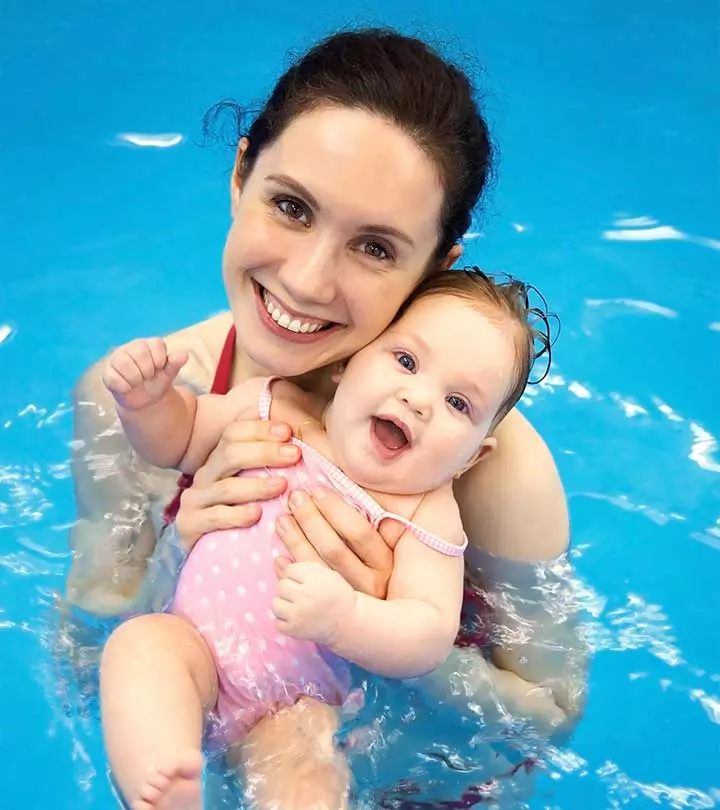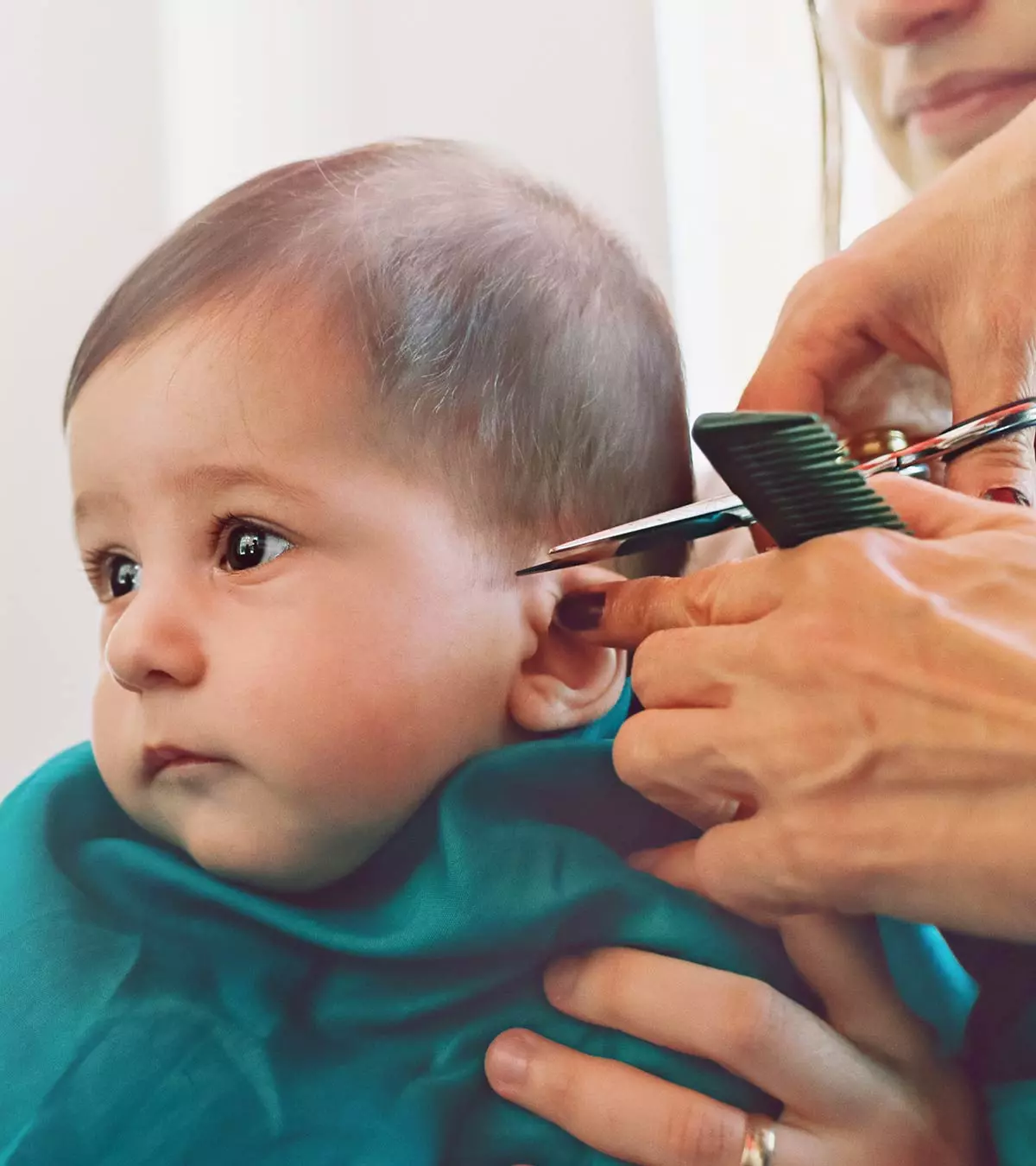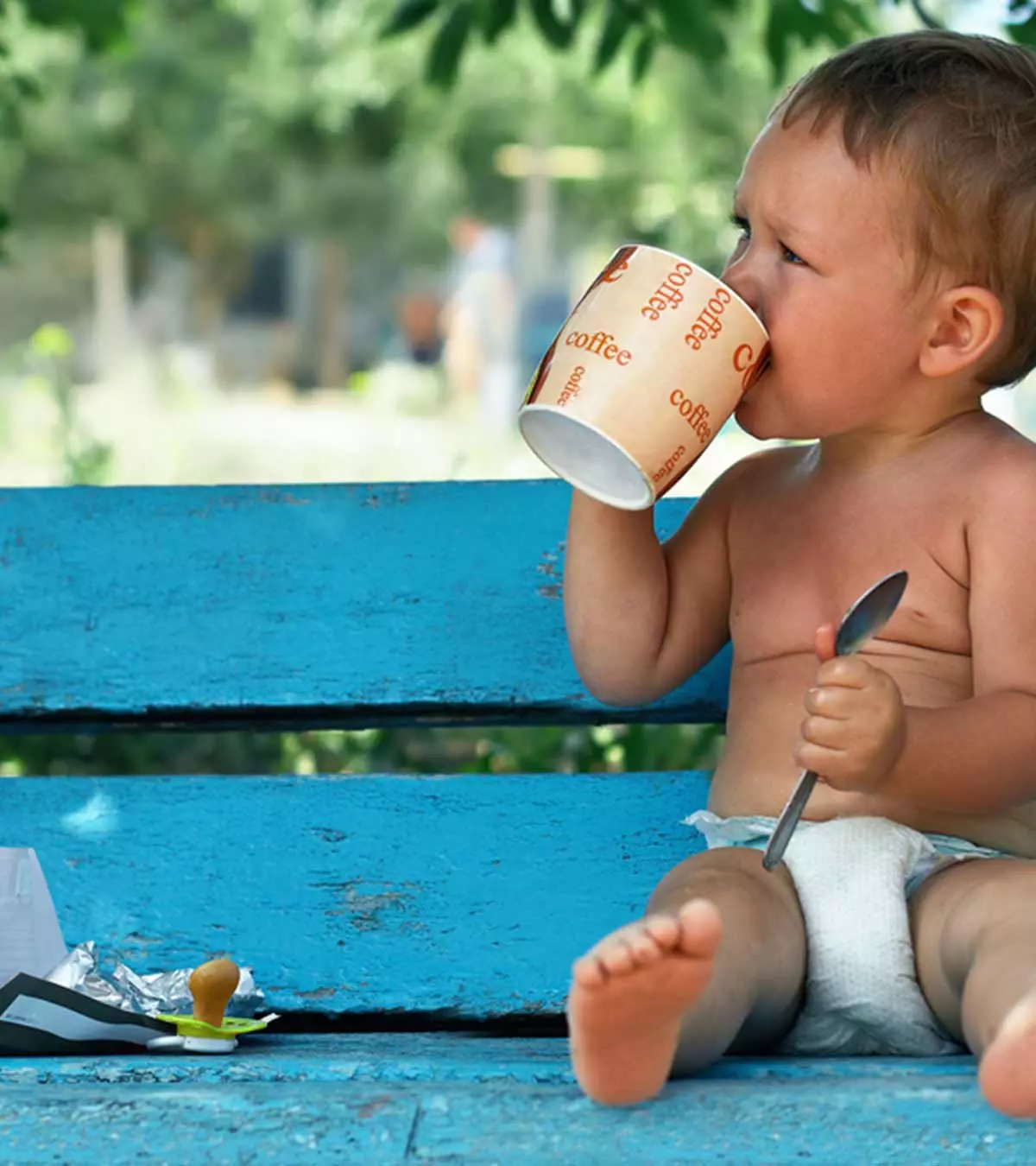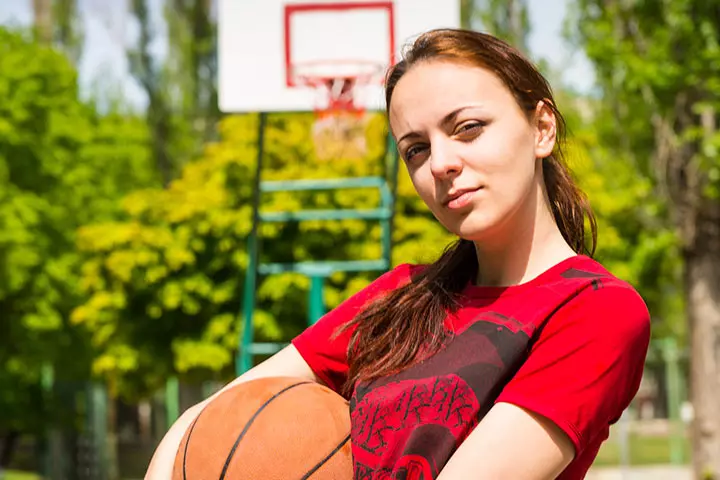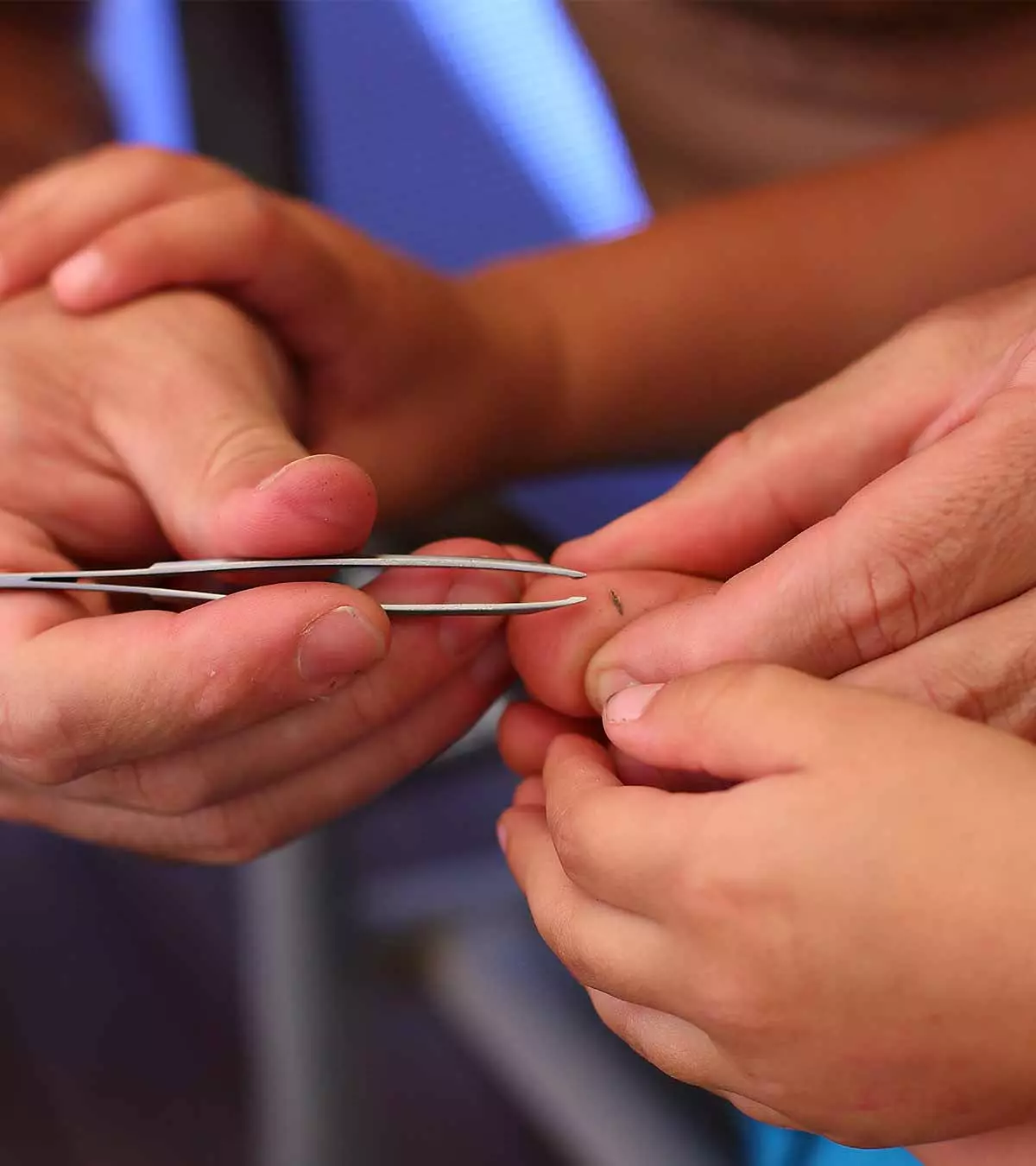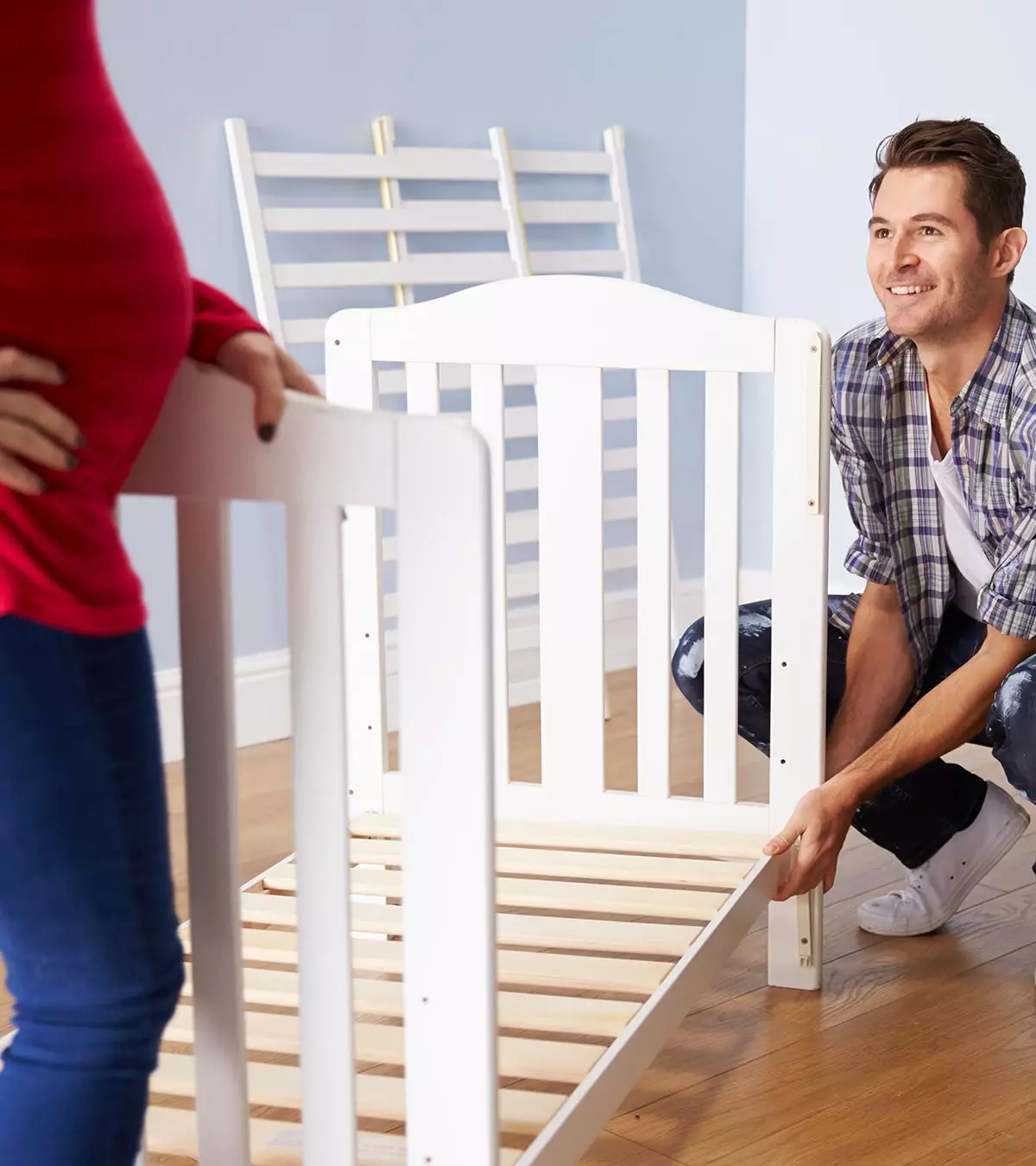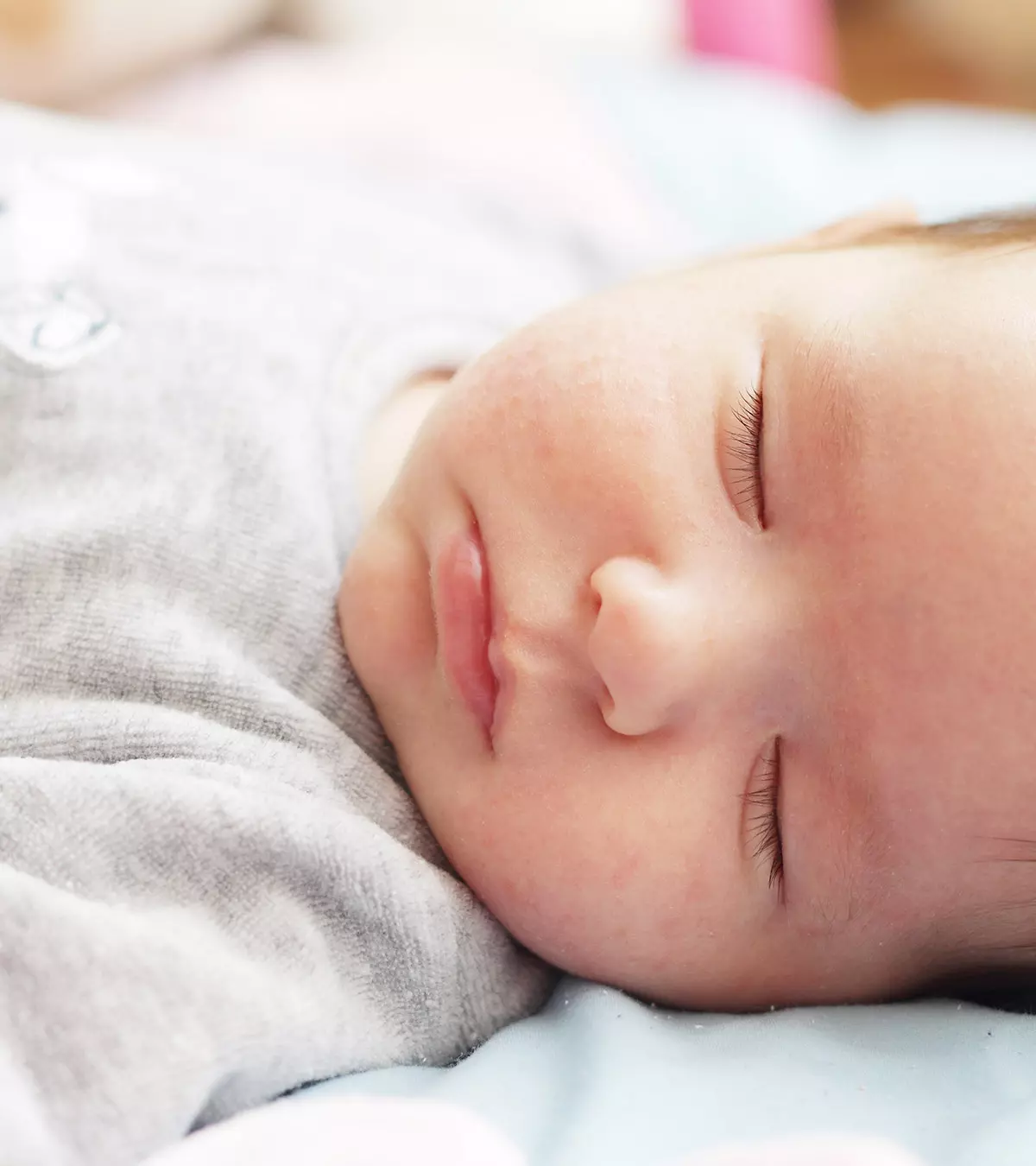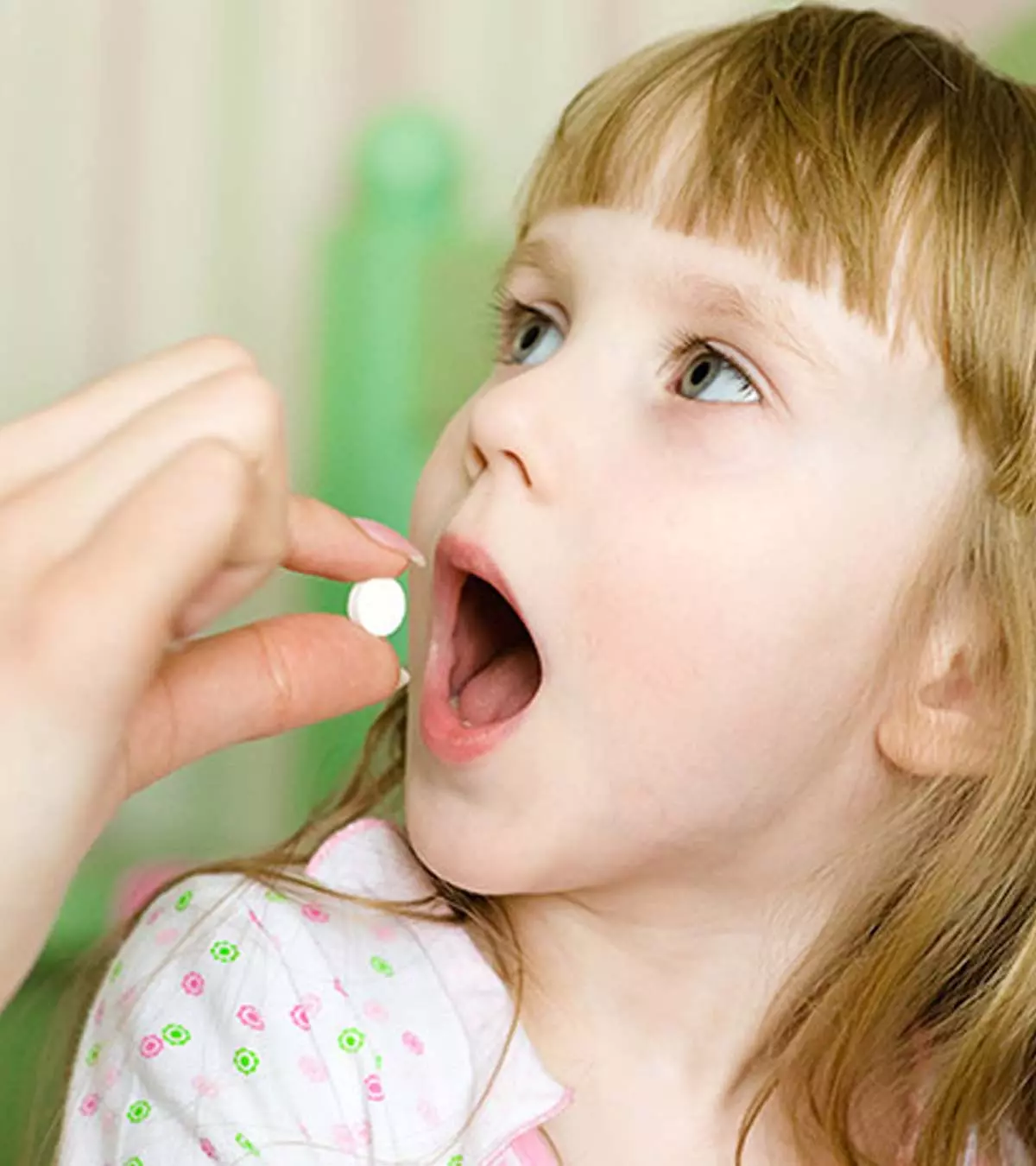
Image: ShutterStock
If you love lighting fireworks on the 4th of July, Diwali, or any other special occasion, you may want your children to join in the fun. However, ensuring fireworks safety for kids is of utmost importance.

Children are always eager to experiment with new things, but fireworks are best lit by adults. They are not suitable for young children, as they can cause burns, eye injuries, and hearing damage. You may introduce fireworks to older kids and allow them to use them under supervision while following necessary safety instructions.
Keep reading to understand when and how to introduce fireworks to children and some safety tips to keep in mind.
 Did you know?
Did you know?Key Pointers
- Children should always have an adult with them when handling fireworks.
- Preschoolers may watch public firework displays from a distance, while grown children may light up light and less noisy fireworks.
- Check local guidelines, find an open area, and ensure the safety of everyone in the vicinity when introducing fireworks to your children.
- Do not allow children to play with fireworks and explain to them the dangers associated.
What Is The Appropriate Age For Playing With Fireworks?
It is imperative for an adult to be present when a child is setting off fireworks to avoid potential hazards. While sparklers are recommended for children seven years and older, younger children should not handle fireworks to avoid any mishaps.
Preschoolers

If your child is below four years, you can take them to public firework displays. They can watch the display from a distance as you talk about fireworks and why they emit so much light and noise.
Elementary and middle schoolers
Elementary and middle schoolers can light up fireworks that are not too loud. These could include snakes, cone fountains, spinners, and ground-bloom flowers, as they do not shoot up or move unexpectedly. These need to be used under close adult supervision. Standing in an open area and keeping a bucket of water or sand nearby are some safety precautions to follow for emergency preparedness.
 Caution
CautionHigh schoolers
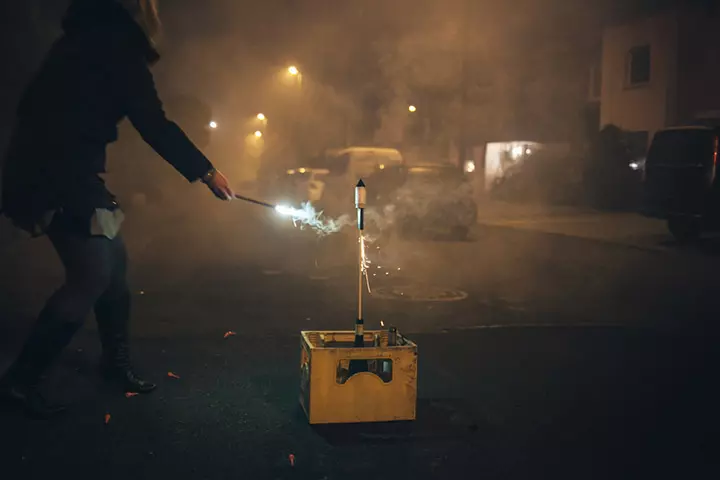
High schoolers can experiment with more variety. They can use rockets, firecrackers, Roman candles, and shells. However, ensure they take necessary eye safety and hearing protection precautions even when supervised by an adult. Before they fire rockets and other aerial fireworks, tell them about how these can travel in unexpected directions and cause danger to younger children and others in the vicinity.
According to the reports by US Consumer Product Safety Commission (CPSC), there were 10,200 injuries reported due to fireworks in 2025.
How To Introduce Fireworks To Children?
Every child is different and might react to fireworks differently. Even if your older child enjoyed fireworks the first time around, it doesn’t mean your younger child will enjoy them too.
Keep the following tips in mind while introducing fireworks to kids so that they can enjoy them as much as you do.
1. Talk about it beforehand
If you plan to take your child to a firework display, do not spring it on them at the last moment. Instead, talk to them about it beforehand. Explain how fireworks work and also talk about the light and sound that most fireworks emit. This way, your child will be prepared for the display and not be disturbed by it.
2. Consider their fears
If your child seems fearful of the fireworks, do not call them silly or childish. You should also not compare them with other children by saying how comfortable the others are. Instead, take cognizance of their fears and stay close to them. Talk to them about each firework before it goes off until they are calm enough to recognize a pattern.
3. Have a plan B

If your child does not like fireworks, display responsible behavior and do not force the experience on them. Have an alternative plan where you can all enjoy equally without distressing your child. It can be a movie at home or a family picnic. Any activity that can keep your child happy is worth considering.
4. Keep yourself equipped
It is not enough to take your child to a firework display. You must be equipped with certain things that will help keep them in a good mood. When you are at a display, remember that it will stretch on for hours. Carry snacks, drinks, and plenty of diapers and wipes so that you are equipped for any eventuality.
5. Watch from afar
Often, fireworks can be watched from afar. You can consider this option if your children are afraid of the noise. Fireworks that go off far away look brilliant, and the noise is considerably less. You and your children can get the best of both worlds.
6. Control your anxiety
Children can sense your anxiety even if you do not exhibit it explicitly. They can then get anxious themselves. The calmer you are during a firework display, the more relaxed your children will be.
7. Select a spot with other families
If a firework display is being organized at a beach or a school, you can take your children along. Families frequent these places, and it can be a learning and calming experience for your children. They can observe other children of their age and feel reassured.
8. Carry earplugs
Whether your child is sensitive to noise or not, you will have to carry earplugs for hearing protection. Even the bravest of children are likely to be overwhelmed with the noise after a certain point in time. If possible, carry earplugs and get a favorite plush toy or a blanket so that your child feels safe.
Safety Tips For Introducing Fireworks To Children
Whatever your child’s age, you must always keep some safety tips in mind while introducing your kids to fireworks with minimum risks. Here is a list of Dos and Don’ts (1).
Dos

- Check local guidelines to see whether it is legal to burst fireworks in your area.
- Read the safety guidelines on every box of fireworks you buy and teach children the importance of following them.
- Light fireworks in an open area and away from buildings and flammable materials.
- Keep a bucket of water or sand nearby.
- Make sure there are no other people in the immediate vicinity.
- Douse the burnt fireworks in the water before leaving.
- Seek medical attention immediately in case of any injury.
- Keep your pets in a room with soundproof windows.
- Light one firework at a time.
 Point to consider
Point to considerDon’ts

- Do not allow young children to play with fireworks or go near them.
- Do not handle fireworks when you are under the influence of alcohol or drugs.
- Do not buy illegal fireworks or those of inferior quality.
- Do not re-light or pick up a firework that has not fired properly. Put it in the bucket of water after 15 to 20 minutes.
- Do not use any containers to ignite fireworks. Containers such as glass bottles or metal boxes should be avoided at all costs.
- Do not hold fireworks close to your body.
- Do not bend over fireworks while lighting them.
- Do not use homemade fireworks.
- Do not carry fireworks in your pocket.
Although playing with fireworks can be fun and exciting, it can cause severe injuries if safety precautions are not followed. The number of firework-related injuries reported to The National Electronic Injury Surveillance System (NEISS) was 935 between 2018 and 2025, with the hand being the most injured body part. The national estimates for firework-related injuries were used to generate the below-given graph. As the graph depicts, a large annual surge in firework-related injuries can be seen in July, and a small surge can be seen in January.

Firework-related emergency department visits in the US on a monthly basis (2018-2025)
Source: Firework-related injuries treated at emergency departments in the United States during the COVID-19 pandemic in 2025 compared to 2018–2019; Injury EpidemiologyFrequently Asked Questions
1. What is a safe distance from fireworks?
Maintain a distance of at least 40 meters from the fireworks to protect yourself and your child from potential injuries. Further, the American Society for Surgery of the Hand recommends maintaining a distance of around 150 meters while watching a public fireworks display (2).
2. How can fireworks injuries be prevented?
Light fireworks in an area without combustible materials such as hay and wood piles. Wear protective eyewear and keep a well-equipped first aid kit handy. In addition, ensure easy access to plenty of water or sand in case of mishaps.
3. What kind of firework causes the most injuries?
Bottle rockets, firecrackers, and sparklers cause the most number of injuries and frequently affect the hands, head, and eyes. In extreme situations, they can cause blindness and third-degree burns (3).
4. What should I do in case of an injury during fireworks events?
If an injury occurs, remain calm and assess the situation. For severe injuries, call emergency services immediately. For minor injuries, rinse with cool water and apply a clean bandage.
Ensuring fireworks safety for kids is essential. Children should not handle light fireworks since their improper use can cause injuries. Burns in children on the hands and face, eyesight loss, and hearing loss are common preventable injuries related to the unsafe use of fireworks. Although it is safe for older children to play with some sparklers under adult supervision, it is unsafe for those younger than seven. So spread awareness among children about fireworks and educate them on fire safety tips for kids. Additionally, you may take children to public fireworks displays where professionals light the fireworks with necessary caution.
Firework-related injuries are usually common around holidays related to firework celebrations. The most frequently injured body parts include the head/neck, eyes, and hands. Burns are the most common injuries, followed by cuts, bruises, bumps, and third-degree burns. Fireworks can also cause life-threatening fires. Go through the infographic below to know the common fireworks injuries and tips to teach your children.
Some thing wrong with infographic shortcode. please verify shortcode syntax
Illustration: Fireworks Safety Tips For Children To Know Before Playing

Image: Stable Diffusion/MomJunction Design Team
Children enjoy watching fireworks. But parents need to take utmost care of children when dealing with fireworks as it can be hazardous. Learn how to keep your kids safe when using fireworks with this helpful video.
References
- Fireworks Safety.
https://kidshealth.org/en/parents/fireworks.html - Fireworks Safety.
https://www.assh.org/handcare/safety/fireworks - Firework Safety.
https://www.nationwidechildrens.org/research/areas-of-research/center-for-injury-research-and-policy/injury-topics/sports-recreation/firework-safety#:~:text=The%20types%20of%20fireworks%20thathead%2Fneck%2C%20and%20eyes. - 5 Facts About Fireworks.
https://www.energy.gov/articles/5-facts-about-fireworks - Fireworks.
https://www.cpsc.gov/Safety-Education/Safety-Education-Centers/Fireworks
Community Experiences
Join the conversation and become a part of our nurturing community! Share your stories, experiences, and insights to connect with fellow parents.
Read full bio of Dr. Dur Afshar Agha
Read full bio of Nisha Bharatan
Read full bio of Dr. Ritika Shah
Read full bio of Trisha Chakraborty






